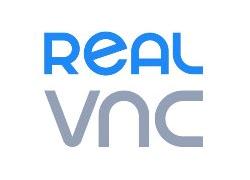Five ways remote access will impact working practices – Part 2

Part 1 of this article appeared yesterday. Trends like the Internet of Things, 24/7 business cultures, and evolving technologies mean that the way that we work is changing rapidly, and businesses are increasingly sharing resources and collaborating in order to get ahead.
Some are unaware of the role remote access plays within these developments, when it often acts as the backbone.
Here, Adam Byrne, chief operating officer of RealVNC has outlined some of the most prominent ways that remote access tools will impact businesses in the next 12 months. These are the last two of five ways.
There will be a growing emphasis on active management of security and compliance
Security is a major concern for all businesses today. Recent large-scale hostile attacks on corporate assets illustrate just how exposed some businesses can be, and with the explosion of new devices and users, the security risk multiplies. Securely managing rapidly growing numbers of increasingly complex devices and controlling the people that can access them is now critical to a larger security strategy.
A secure remote access platform plays a big part in mitigating the risk that comes with distributed devices, and in the next 12 months there will be more demand for end-to-end encryption and multifactor authentication from businesses demanding a safely-managed device estate.
With the proliferation of privacy regulations like General Data Protection Regulation (GDPR) and industry specific compliance requirements such as PCI DSS and HIPAA, controlling access to data and resources is increasingly important. A secure remote access strategy can help to ensure that only authorised individual can access restricted information. Seeking out tools with robust security standards that specifically address the compliance considerations relevant to your industry, should therefore be a priority.
Remote access will be increasingly used to centrally manage a distributed estate of diverse devices, reducing the number of people involved in the device maintenance and management process and limiting the need for onsite support. An audited central management strategy mitigates the security risks inherent with large support teams, while actually lowering maintenance costs, improving up-time and enhancing estate efficiency.
More businesses will integrate remote access capabilities ‘under the hood’
Just as the adoption of remote access is increasing within and between companies to benefit from improved business efficiency, we are seeing a significant trend in the integration of remote access software directly into products. This OEM integration model is part of the growing IoT phenomenon, providing high value products with real-team connectivity to reduce the cost of maintenance, improve support efficiency and enhance customer service.
One good example are aging ATMs that have been in operation for many years. Financial institutions are dealing with legacy systems where the support for old operating systems has ceased. This is creating a bubble of operating systems that are out of date, impeding applications, and it’s creating a situation where upgrades are extremely expensive, demanding hours of onsite service time.
Microsoft discontinued support of Windows XP in April 2014, yet many ATMs are still running this old OS without the benefit of the latest security patches. This is expensive and opens them up to a range of vulnerabilities.
To address this situation, the banking sector is starting to put remote access capabilities directly into ATMs for remote diagnostics, management and central OS upgrades. And, they’re using it for more than remote maintenance and system upgrades. Real-time remote access can support customers with on-screen annotation and advice, improving the customer experience by putting the human element back into automation.
A secure remote access strategy is helping financial institutions reduce the cost of operating their ATM estates through more efficient central management and fewer onsite service calls, while improving customer service at the same time.
This trend extends well beyond the banking sector. We are seeing a growing trend for the integration of real-time remote access into a wide range of “smart” devices to cut the cost of management and support. Other sectors include retail, fleet management, manufacturing, consumer electronics and healthcare; any environment with valuable devices that demand high up-time and reliable operation.
The author of this blog is Adam Byrne, chief operating officer of RealVNC
About the author:
Adam Byrne has a background in Mathematics and Computer Science and a career spent growing IT companies from the ground up, Adam Byrne brings both business and product development skills. He has full responsibility for overseeing day-to-day business operations, and makes valuable contributions to strategy and direction. He is building a worldwide ecosystem of technology partners and licensees in a variety of vertical markets to build value into the brand and reach full commercial potential.
Comment on this article below or via Twitter @IoTGN

